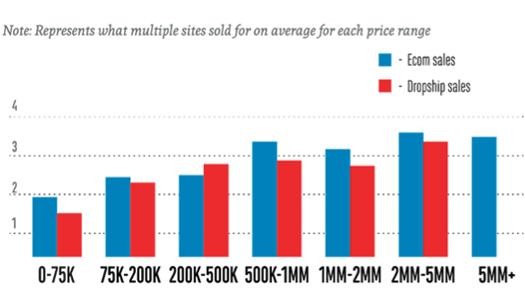You have worked hard to turn your idea into a thriving business. You have made sacrifices to grow your business and shape it into a success. One day, you may decide you want to move on to your next venture, and it’s time to sell. To do that you have to value your business first. How will you do that? Let us give you a couple of tips based on solid data and real world experience.
Different Valuation Methodologies
Valuation is not a simple subject, and different businesses should be valued differently. The most common ways of business valuation are as follows:
● Asset Methodology – this is the “by the book” accounting method of deciding how much the business is worth based on book value and liquidation. Your business owns certain tangible assets, such as computers or office equipment. If those assets were sold, the sum of those assets give the total asset value of your business. If you were to sell all of your assets today, how much money would you have?
● Historical Earnings Methodology – this one boils down to past performance. You must look back at the past couple of years and determine how well the business has done, and then decide how much the business is worth based on that information. The price of the business is usually a multiple of the past 12 months of profit, but let’s come back to that a little later.
● Comparable Sales Methodology – your business might be a common one, so you could compare the price of businesses that sell a product or provide a service similar to yours and see for how much do they sell. For example, you own a business that sells bicycles and Bob, your competition, sell bicycles as well. Bob recently sold his business, which was very similar to yours, for $100,000. Guess how much your business would be valued using this method? Yep, a hundred grand.
● Future Earnings Methodology – This method involves using the discounted cash flows of the business to try to predict how much the business is going to make in the future. This is used to decide how much someone would be willing to pay for that business today. This tends to work with bigger businesses that are well established. For example, let’s say you own an international bicycle company that has multiple factories. One day, you decide to sell, so you want to determine the potential future earnings. To do this, you open your accounting books and look at how much the business was making in the past couple of years, and most importantly, whether or not that amount was growing from year to year. Let’s say that in the past 3 years you made $100K , $110K, $130K, respectively. Chances are you will make $140K this coming year and the $150K the year after that. Based on that info, you and the buyer can decide on how much the business is worth. Of course, this is almost like predicting the future with a crystal ball, since nothing is certain. Maybe next year bicycles will become illegal or a much cheaper and more efficient mode of transportation will be invented which will put you out of business. Like all valuations, both sides take certain risks and make certain assumptions.
In the brick-and-mortar business world, more often than not, the discounted cash flow methodology is used to evaluate businesses. However, since ecommerce businesses are somewhat different from your traditional businesses, the historical earnings method is a more common valuation method because this is a more reliable way to predict what the future holds.
Sounds complicated? Let’s hope not, but just in case it does, here is a quick example that might clear it up a little.
Let’s Use a Real-world Business Example
Michael owns a website that sells tea products. The business was started 4 years ago as a hobby, but Michael was able to take it to the next level and today it is thriving. The following are the financials of the business:
• Year 1 – Sales of $22,678 and profit of $1,088
• Year 2 – Sales of $59,831 and profit of $12,456
• Year 3 – Sales of $175,698 and profit of $49,736
• Year 4 – Sales of $350,128 and profit of $108,082
The business is reliant on different sources of traffic that are well distributed. The business is mostly drop-ship. The supplier of the products has been with the business since day one and is very reliable.
Since the business has a stable foundation, traffic comes from different sources, stable supplier, etc. Michael’s business comes out at 3.1X. This means that his business is worth $334,000 ($108,082 multiplied by 3.1 = $334,000)
Where Does Your Business Sit from this Perspective?
Well, to answer this question to the best of our ability, we would have to take a look “under the hood” of your business and evaluate different elements. If you want to know what your business is worth, we would love to give you a free evaluation at DigitalExits. If you are just interested in the general picture, here are some tools that might help.
Here is an analysis of the selling price for around 150 businesses. As you can see, the more the business is worth, the higher the multiplier is. Also, you might notice that drop ship businesses do not sell for as much as ecommerce business; that is mainly because drop-ship businesses tend to have a couple of small disadvantages compared to ecommerce businesses such as: low entry barrier, lower profits, product tends not to be original, and so on.
If you need to know the value of your business – to prepare it for sale or for any other reason – hopefully these tips have given you a basic understanding of the process. Good luck!

